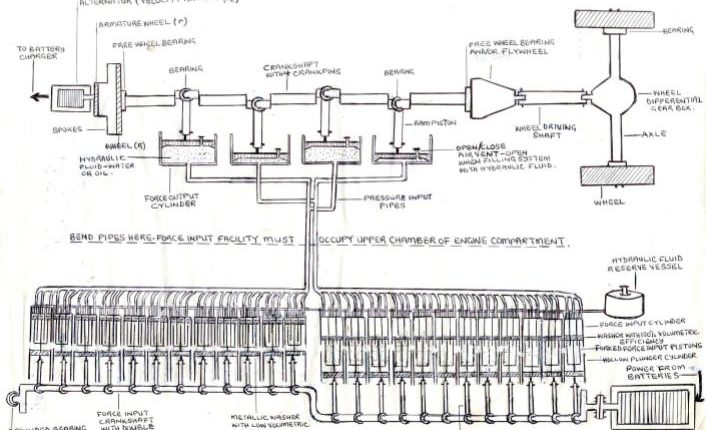SHARE
Self-sustaining Hydraulic-Assisted Electric Vehicle and its derivatives
This project is aimed at making self-sustaining electric vehicles in recharging their batteries -weaning them from the mains. In this respect, force input fro m the driving electric motor is to be boosted through hydraulic actuators, use part of the augmented horse power to run an alternator, and charge the installed batteries as the car runs .
To accomplish all this, the ac motor of the car shall not work the while directly . Instead, it shall to sets of multiples of force input pipes through a single crank pin. Pressure from the two sets of the force input pipes are integrated into two pooling pipes to operate force output pipes dark work rum-pistons.
Now, reciprocating ram pistons impart rotary force to crank shaft that work the cars wheels and alternator. A mathematical model shows that an input of 50 horse power can be boosted to more than 3000 horse power through this electro-hydraulic actuation.
The augmented horse power would work the wheels , alternator an also over come all frictional forces of the car. This will benefit nations that have limited distribution of electricity.
Two kinds of electricity generators can be derived from the process:
Firstly we can for go the wheels and install only alternators and have the system run in an automated hydraulic mode to generate electricity. It will run ad-infinitum because power would be taking to charge the batteries. This is the self-sustaining hydraulic assisted electricity generator.
The second is the manual hydraulic electricity generator. It would use manual force input to generator electricity. It would be ideal for Africa where unemployment persists, in the miss of cheap labor, as we import fossil fuel to generate electricity.
